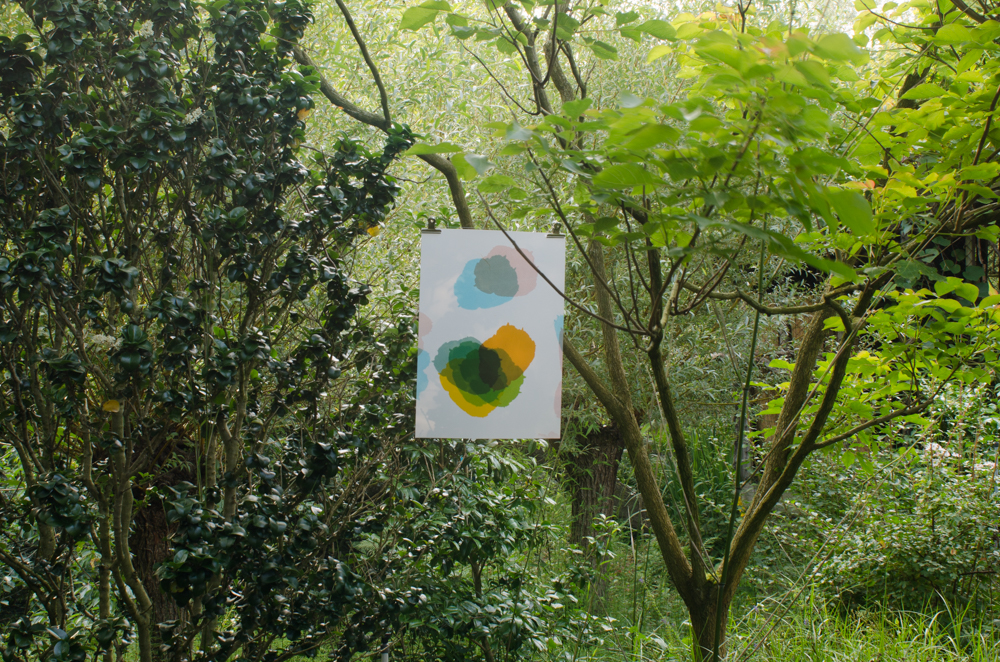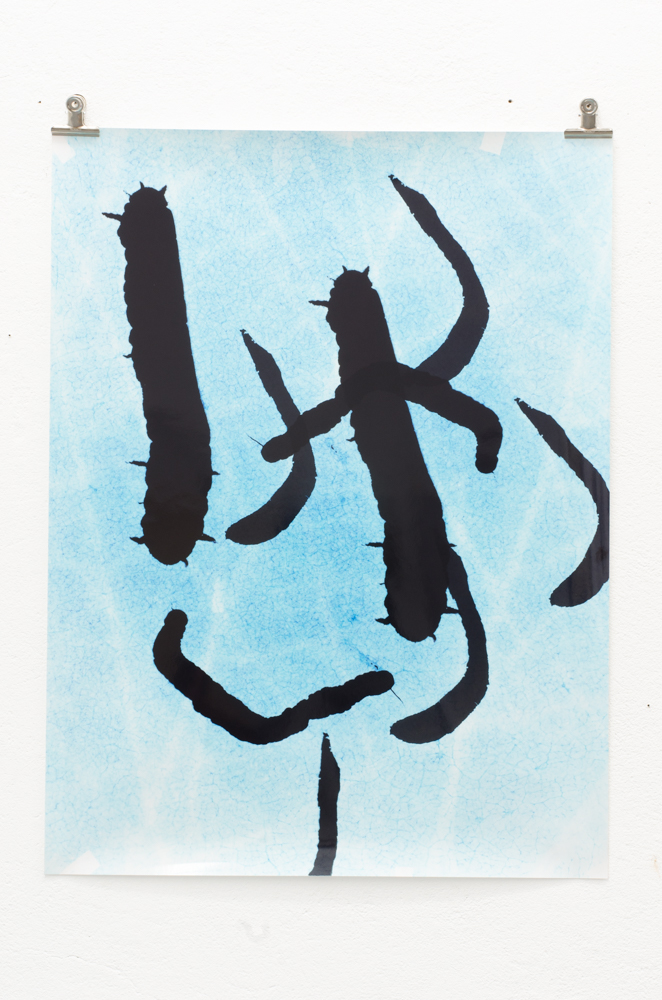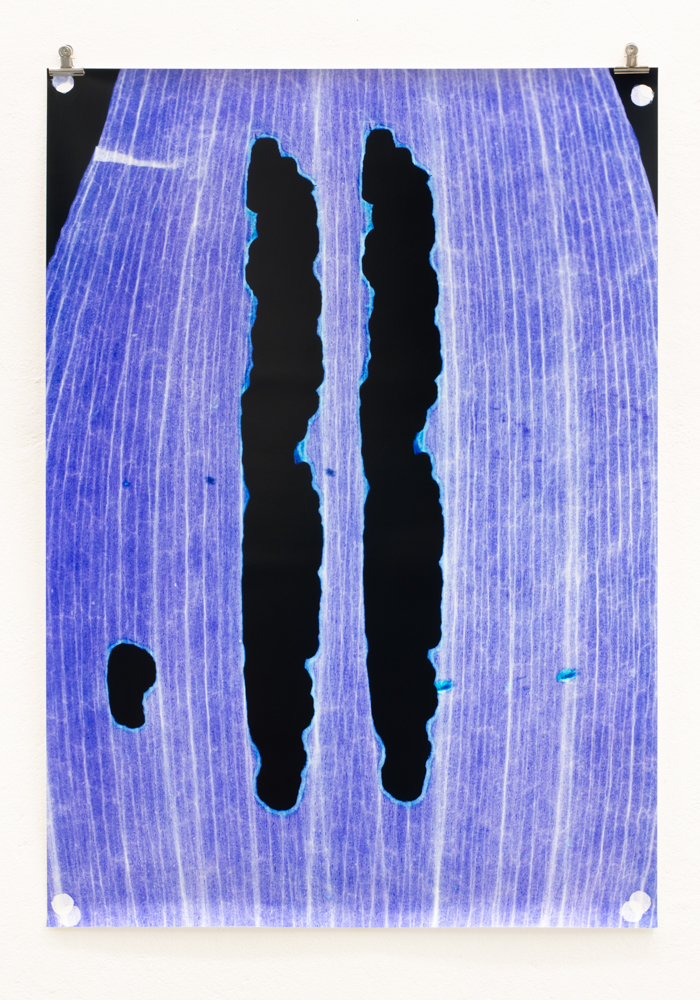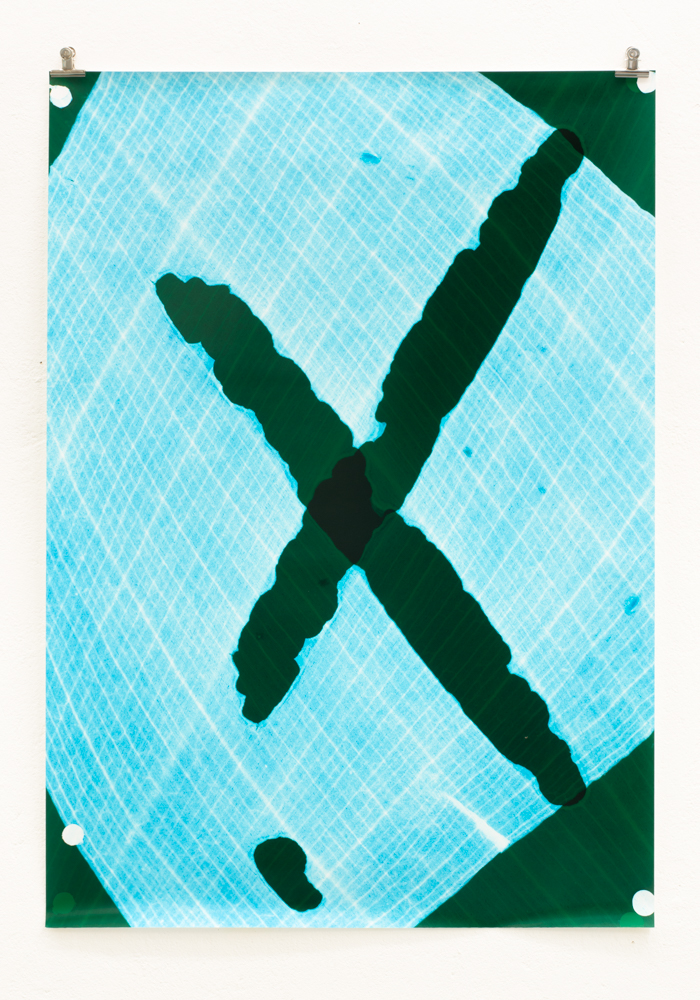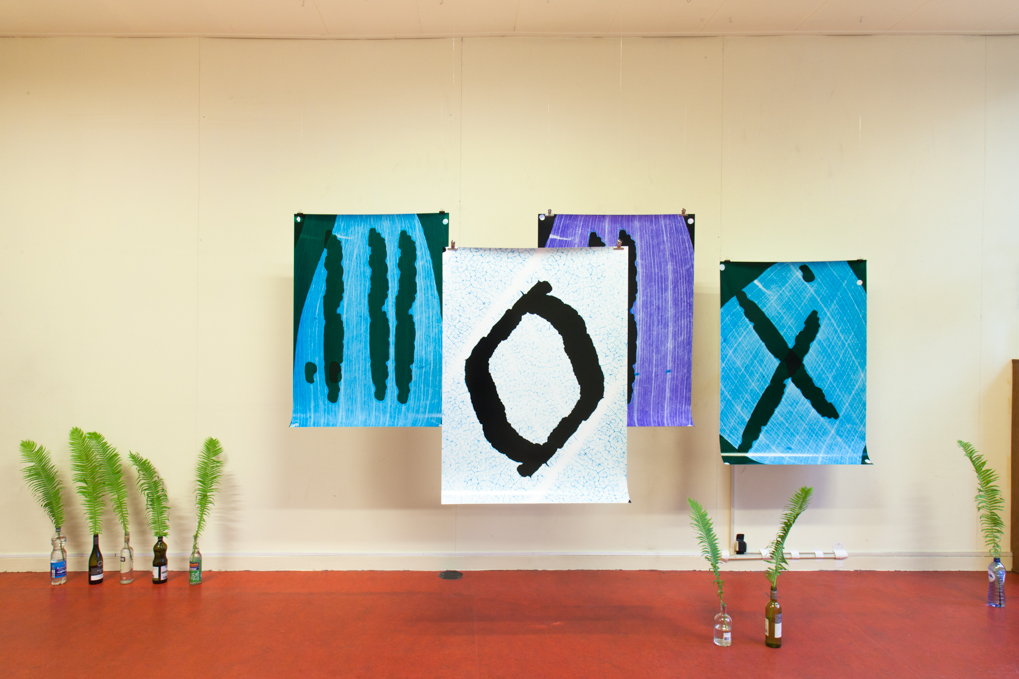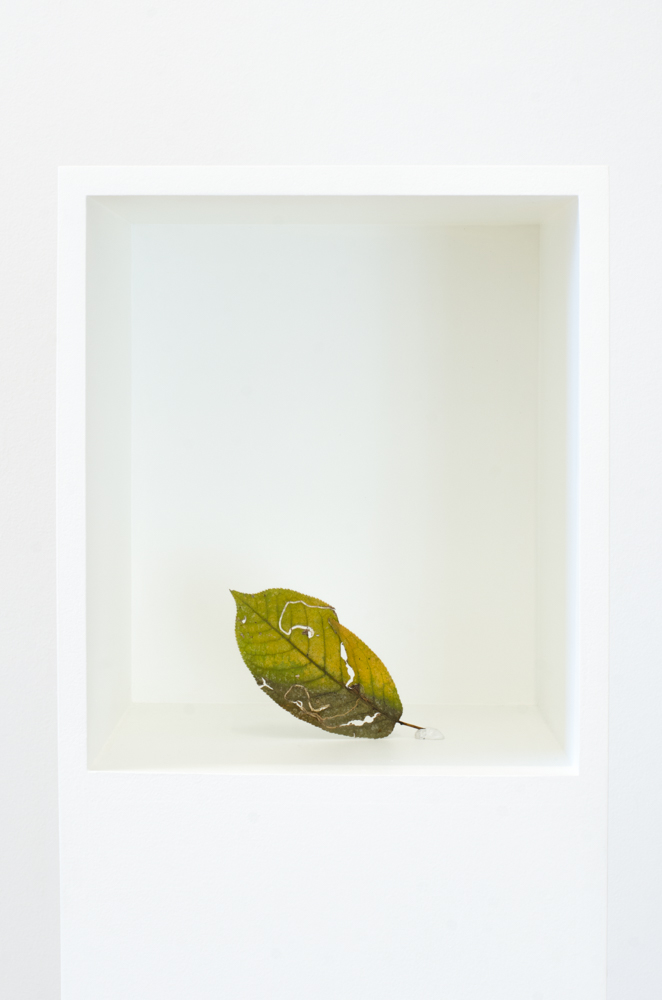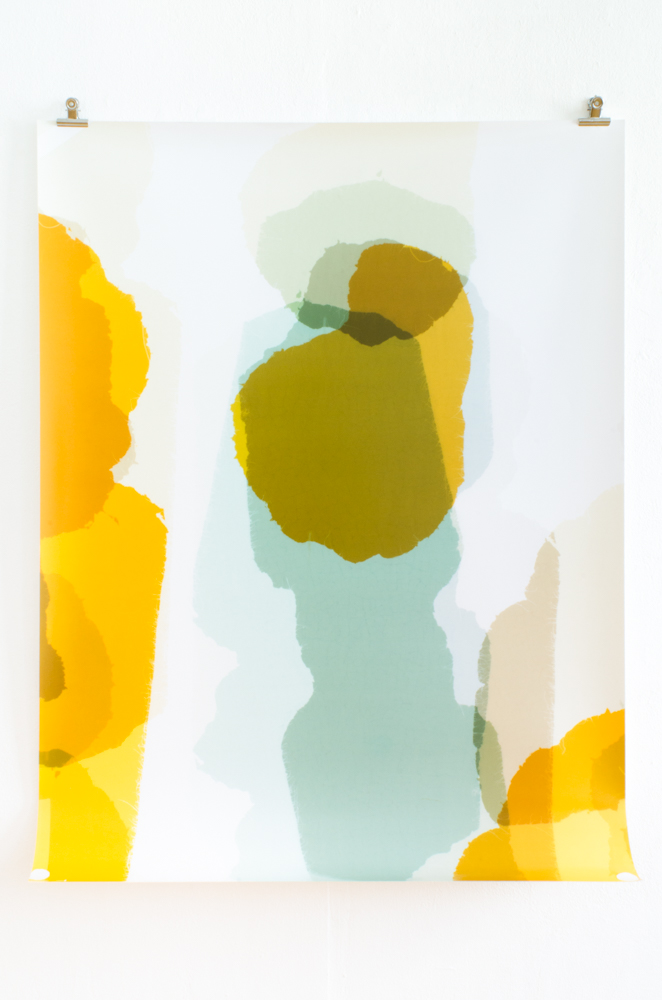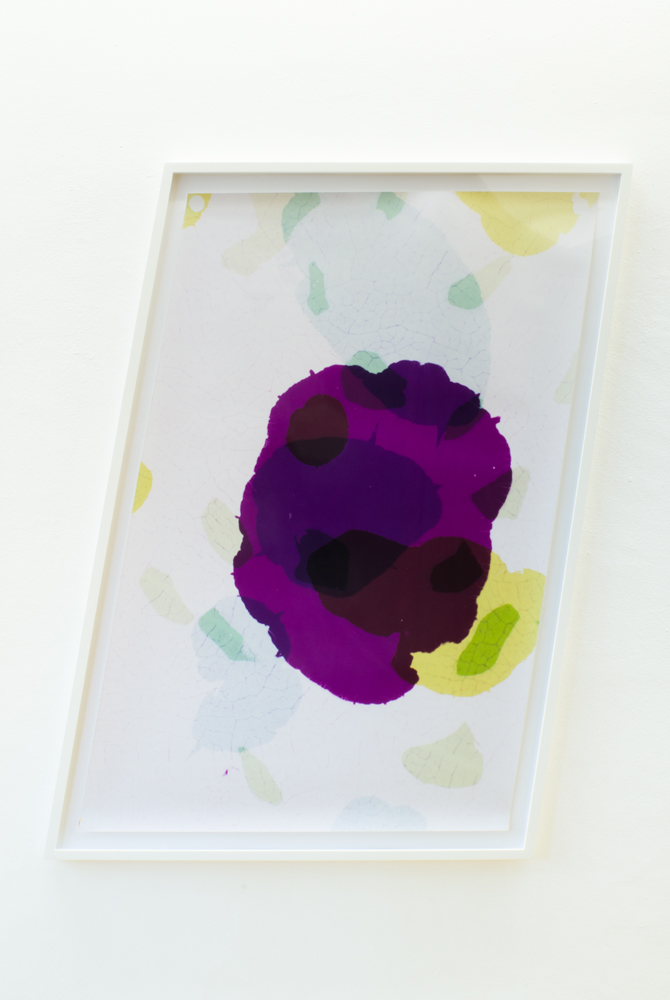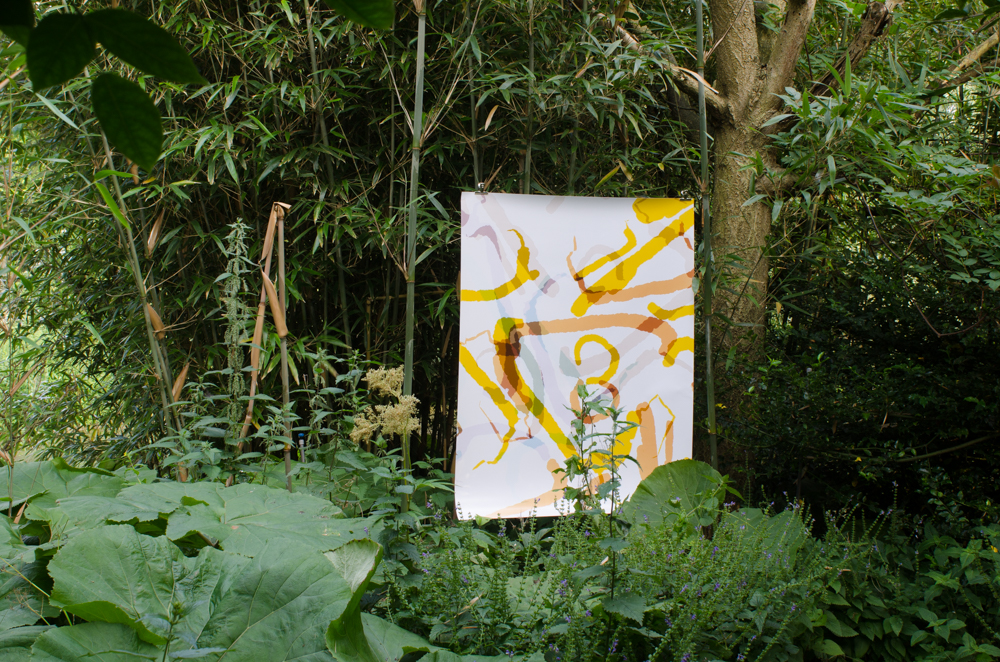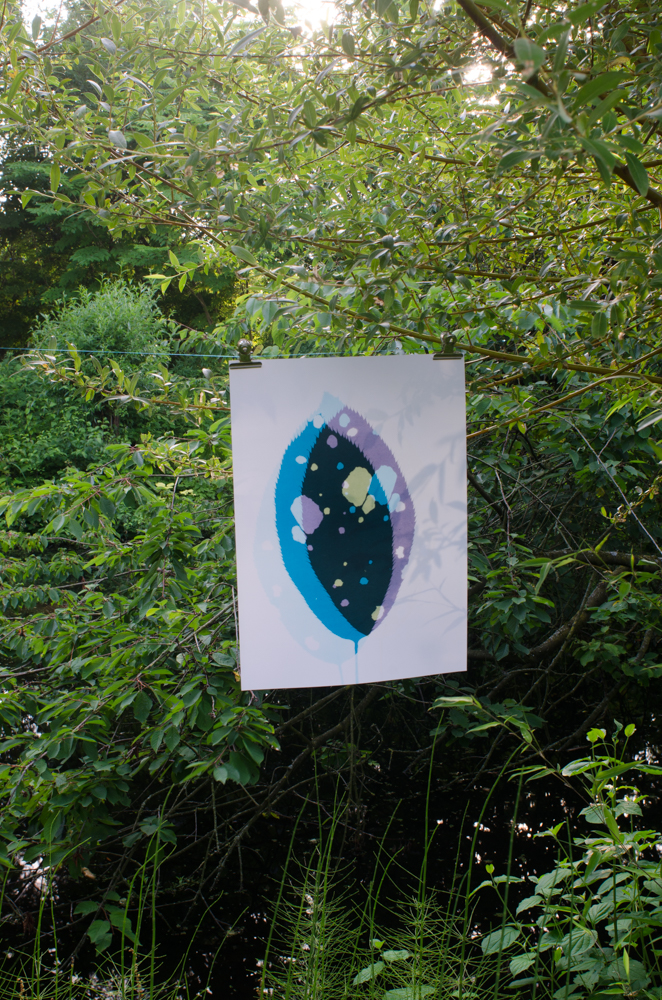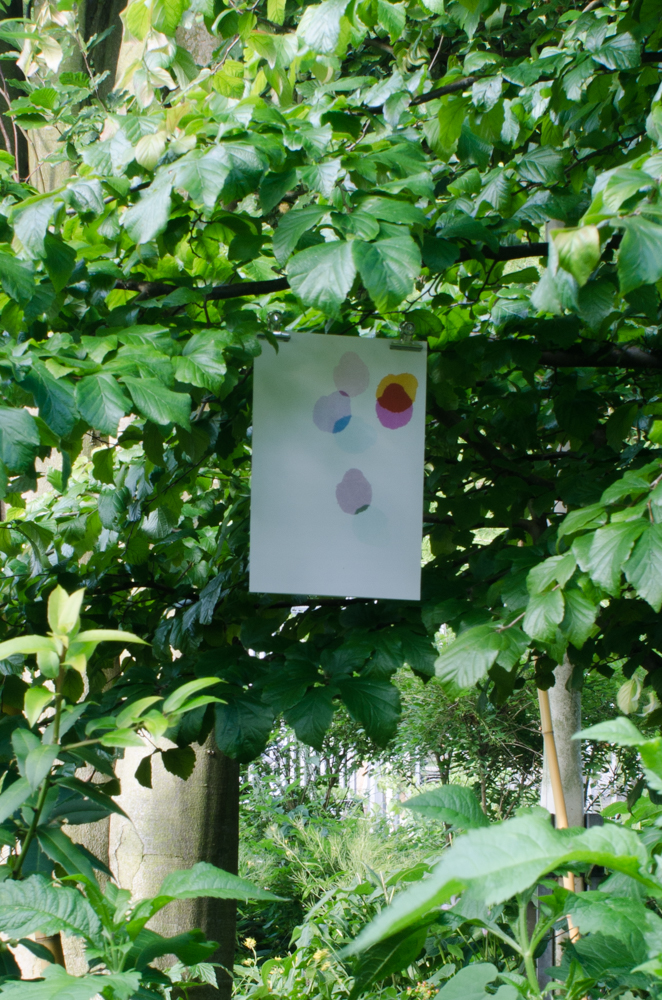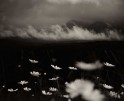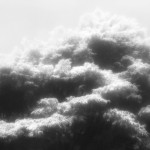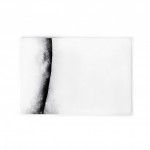Eva-Fiore Kovacovsky: Fotogramme
I often find myself coming back from a stroll through the park with a pocket full of leaves, twigs and other keepsakes of nature with a plan to make art. The art does not always get made, but I hold on to my little personal herbarium, just in case. So, I was very intrigued when I first saw the images of colorful photograms by Eva-Fiore Kovacovsky being displayed amongst the plants at the VU University Amsterdam Botanical Garden. Her series Fotogramme is lively, abstract and looked right at home in the garden setting. I was not sure exactly what I was looking at as the shapes seemed vaguely familiar and organic. It was an “ah ha” moment when I learned from Eva that the negatives used for the photograms were insect eaten leaves that she had collected, and the abstract shapes on the prints were from the holes left by the bugs. She told me, “I was interested in the inner logic and beauty of these holes. Where do the compositions come from and what patterns do the insects create?”
Eva was born in Switzerland and grew up on a farm surrounded by fields and forest. From an early age she has had a strong connection to nature that has resonated through her artistic practice even now as she lives and works in the urban centers of Amsterdam and Berlin where she is currently based. “For me nature is a place I can always find inner peace. I can visit it everywhere I go because there is always a piece of land that is growing wild and is reclaiming its territory,” she explained. This idea of “reclaiming its territory” also seemed quite appropriate regarding how Eva’s photograms have been exhibited. About the botanical garden show she told me; “It was an experiment to explore what happens if the prints are placed back into ‘nature.’ This installation has triggered my thoughts about space within a building and space in the wild. What happens if the exhibition space is placed within nature and vice versa if the wild is placed in an exhibition space? What are the possibilities of bringing living or dried plant specimens into the exhibition space while still preserving their unpretentious magic?” This series has also been shown and well received in traditionally gallery settings where she has continued to experiment with nature and space.
Eva has a BFA in Photography from Gerrit Rietveld Academy in Amsterdam. She has been featured in Aperture Magazine and Aperture Foundation has produced a limited-edition portfolio of her photograms. Eva’s work has won numerous awards and has been widely exhibited. She is represented by Gallerie STAMPA in Basel, Switzerland. A new book project of her photograms is in the works and she is currently organizing a group show of like-minded artists from Bern, Amsterdam and Berlin that will open at the Stadtgalerie in Bern, Switzerland this October.
Fotogramme
In my work, I collect and utilize plants found in the wild as my working material. How plants have been depicted, studied and used over the course of history is a big inspiration for me. By editing, arranging and reproducing my own collection of specimens I construct renderings of my imagination. I am interested in the appearance of the plant specimens, their diversity of growth and development as well as the impact of their surrounding environment on their appearance.
I locate myself in and amongst my chosen subject, and my working practice is highly physical. I hike and dig, I collect and compare; I work with my hands, appropriate plants, objects and images that surround me. To me, choosing, collecting and appropriating are methods to create.
In the last three years, I have been working intensely with leaves perforated by bugs and caterpillars. I have collected them for their distinctive perforations of holes. In the darkroom, I have used them as negatives and projected them on c-print paper. In this way, I created a series of prints that rearrange and abstract the patterns of holes found in the leaves.
In the summer of 2014 I have installed a series of my Fotogramme in the plant collection of the Hortus Botanicus in Amsterdam within the framework of a lecture evening initiated by Sara van der Heide and ‘If I Can’t Dance, I Don’t Want To Be Part Of Your Revolution’. It was an experiment to explore what happens if the prints are placed back into “nature.’ This installation has triggered my thoughts about space within a building and space in the wild. What happens if the exhibition space is placed within nature and vice versa if the wild is placed in an exhibition space? What are the possibilities of bringing living or dried plant specimens into the exhibition space while still preserving their unpretentious magic?
Posts on Lenscratch may not be reproduced without the permission of the Lenscratch staff and the photographer.
Recommended
-
Earth Month: Photographers on Photographers, Dennis DeHart in conversation with Laura PlagemanApril 16th, 2024
-
Luther Price: New Utopia and Light Fracture Presented by VSW PressApril 7th, 2024
-
Artists of Türkiye: Eren SulamaciMarch 27th, 2024
-
European Week: Sayuri IchidaMarch 8th, 2024
-
European Week: Jaume LlorensMarch 7th, 2024

